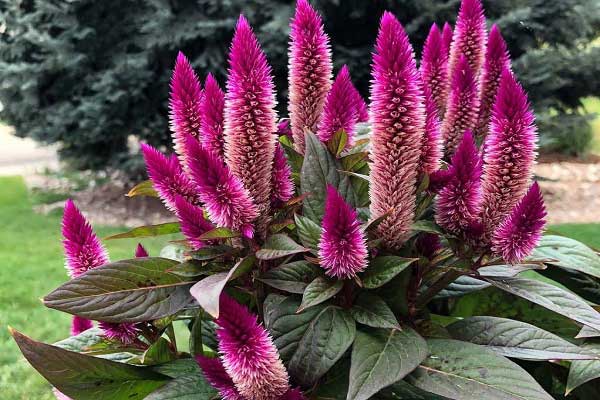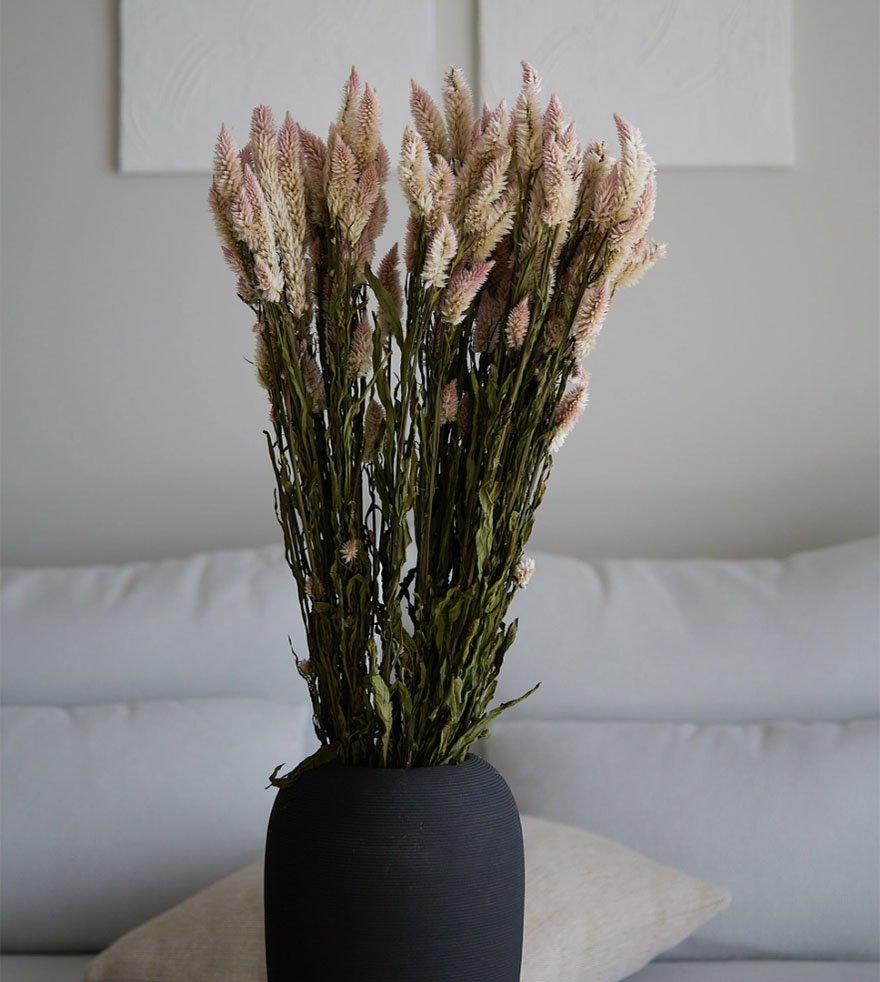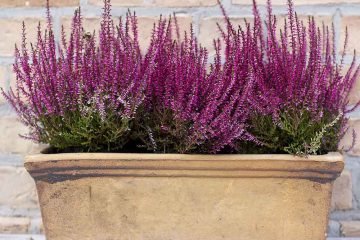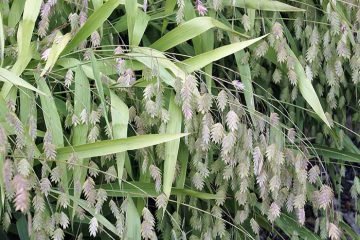Amaranth flower
Amaranth flower specifications
- Scientific name : Amaranthus
- Common Names : Amaranth, amaranthus, love lies bleeding, tassel flower
- Order : Caryophyllales
- Family : Amaranthaceae
- Subfamily : Amaranthoideae
- Genus : Amaranthus
- Plant Type : Annual
- Mature Size : 2–4 ft. tall, 1-2 ft. wide
- Sun Exposure : Full sun to partial shade
- Soil Type : Moist but well-drained
- Bloom Time : Summer, fall, winter
- Flower Color : Red
- Native Area : India, Africa and Peru
The Amaranthus genus is a complicated one featuring at least 75 annual and short-lived perennial species that easily cross-breed and hybridize. Today, most gardeners are familiar with the species as annual ornamental plants and many don’t realize that amaranths are also edible plants that can be grown for their grain-like seeds and edible leaves. Culinary use was once the primary reason amaranth was grown as a staple in home cottage gardens. The use of amaranth as an ornamental plant is a relatively recent development in the plant’s history. Amaranth flower
read more : Everything about hydrangeas : How to Plant & care for Hydrangea

Amaranth are characterized by large, broad leaves with prominent veining. Each plant produces a single flower at the end of the tall reddish stem. Colors are usually burgundy, red, pink, or salmon.
Amaranth Care
Amaranth grows well in any average well-drained soil, so make sure the site you choose has good drainage and air circulation. To ensure continued production, it’s a good idea to stagger planting every two to three weeks, beginning a week or two after the last frost date in your region.
While amaranth plants are tall, they aren’t necessarily wide or bushy, so you can plant them 10 to 18 inches apart. The closer you plant them, the better they look once fully grown. At the same time, they need enough space to provide good air circulation. Amaranth flower
 Light
Light
Amaranth does best in full sun in the northern part of its range, but in warm southern climates, it can benefit from some shade in the afternoon. Generally, plant amaranth in a location where it will receive at least six hours of sunlight each day.
 Soil
Soil
Amaranth grows well in average soils and will even grow adequately in poor soils. Only dense clay mixtures are likely to be completely unsuitable for amaranth, though very rich soils might hinder flowering and seed production.
read more : Everything about protea flowers : How to Plant & care for them
 Water
Water
Amaranth plants have average needs for water, requiring no more than one inch per week. Take care not to overwater them or you run the risk of root rot or fungal diseases.
 Temperature and Humidity
Temperature and Humidity
Unlike other leafy green vegetables, amaranth is fairly happy in the heat. Many species are native to the southern U.S. and Mexico, so you can expect them to thrive even when the temperatures are unusually warm.
 Fertilizer
Fertilizer
Amaranth doesn’t require any supplemental feeding. Excessive nitrogen (often found in fertilizers) can cause the plants to become leggy and less suitable for harvesting.
Species
List of Amaranthus species include :
| Amaranthus acanthochiton – greenstripe | Amaranthus acutilobus – a synonym of Amaranthus viridis |
| Amaranthus albus – white pigweed, tumble pigweed | Amaranthus blitoides – mat amaranth, prostrate amaranth, prostrate pigweed |
| Amaranthus arenicola – sandhill amaranth | Amaranthus californicus – California amaranth, California pigweed |
| Amaranthus australis – southern amaranth | Amaranthus cannabinus – tidal-marsh amaranth |
| Amaranthus bigelovii – Bigelow’s amaranth | Amaranthus caudatus – love-lies-bleeding, pendant amaranth, tassel flower, quilete |
| Amaranthus anderssonii | Amaranthus crassipes – spreading amaranth |
| Amaranthus blitum – purple amaranth | Amaranthus cruentus – purple amaranth, red amaranth, Mexican grain amaranth |
| Amaranthus brownii – Brown’s amaranth | Amaranthus dubius – spleen amaranth, khada sag |
| Amaranthus chihuahuensis – Chihuahuan amaranth | Amaranthus fimbriatus – fringed amaranth, fringed pigweed |
| Amaranthus crispus – crispleaf amaranth | Amaranthus hybridus – smooth amaranth, smooth pigweed, red amaranth |
| Amaranthus deflexus – large-fruit amaranth | Amaranthus hypochondriacus – Prince-of-Wales feather, prince’s feather |
| Amaranthus floridanus – Florida amaranth | Amaranthus interruptus – Australian amaranth |
| Amaranthus furcatus | Amaranthus obcordatus – Trans-Pecos amaranth |
| Amaranthus graecizans | Amaranthus palmeri – Palmer’s amaranth, Palmer pigweed, careless weed |
| Amaranthus grandiflorus | Amaranthus polygonoides – tropical amaranth |
| Amaranthus greggii – Gregg’s amaranth | Amaranthus powellii – green amaranth, Powell amaranth, Powell pigweed |
| Amaranthus minimus | Amaranthus retroflexus – red-root amaranth, redroot pigweed, common amaranth |
| Amaranthus mitchellii | Amaranthus scleranthoides – variously Amaranthus sclerantoides |
| Amaranthus muricatus – African amaranth | Amaranthus spinosus – spiny amaranth, prickly amaranth, thorny amaranth |
| Amaranthus pringlei – Pringle’s amaranth | Amaranthus thunbergii – Thunberg’s amaranth |
| Amaranthus pumilus – seaside amaranth | Amaranthus torreyi – Torrey’s amaranth |
| Amaranthus quitensis – Mucronate Amaranth | Amaranthus tuberculatus – rough-fruit amaranth, tall waterhemp |
| Amaranthus saradhiana | Amaranthus viridis – slender amaranth, green amaranth |
| Amaranthus scleropoides – bone-bract amaranth | Amaranthus watsonii – Watson’s amaranth |
| Amaranthus standleyanus | Amaranthus wrightii – Wright’s amaranth |
| Amaranthus tricolor – Joseph’s-coat |
Types of Amaranth
Varieties of amaranth can range from giants topping eight feet tall, to smaller one- to two-foot plants better suited for leaf harvest. You should cultivate larger plants specifically grown for their seeds if you want to harvest the amaranth grain. Amaranth flower
Some popular varieties include :
- Red-leaf amaranth ( Amaranthus tricolor ) : This variety has especially nutritious foliage that tastes like slightly tangy spinach. ‘Molten Fire’ and ‘Joseph’s Coat’ are popular cultivars of this species.
- ‘ Burgundy ’ (A. hypochondriacus ) : Stunning purple leaves, red flowers, and white seeds adorn this variety.
- ‘ Hopi Red Dye ’ ( A. cruentus ) : An heirloom species, it produces excellent protein-rich black seeds.
read more : Everything about Aster flowers : How to Plant & care for them
Iran dried Amaranth flower
If you want to create a dreamy atmosphere, the use of dried Amaranth flower is highly recommended. These dried flowers, while beautiful, is completely recyclable in nature and will always look beautiful in your space without being destroyed. The reasonable price of dried Amaranth flower has made the sale and purchase of dried Amaranth flower a great profit for the wholesalers and exporters of dried Amaranth flower .

read more : Drying natural flowers | Introducing 8 wonderful ways to dry flowers
Propagating Amaranth flower
Thanks to their plentiful seeds, amaranth plants will readily self-seed in the garden. As they sprout in spring, thin the volunteer seedlings to about 10 to 18 inches apart, or carefully dig them up and transplant them elsewhere. It’s also possible to collect seeds in the fall and replant them the following spring. Be aware, though, that if the original plants were hybrids, the volunteer seedlings might not be the same plant as the parent plant. Amaranth flower
How to Grow Amaranth From Seed
When sowing amaranth outdoors, space seeds about four inches apart after soil has warmed in late spring, barely covering them with soil. Germination generally takes 7 to 14 days. As they sprout, thin the plants 10 to 18 inches apart.
If starting seeds indoors, you can use a general seed-starting mix and sow seeds roughly 6-8 weeks before your average last frost date. Cover seeds lightly and keep them consistently moist at about 60 degrees Fahrenheit. After seeds sprout, place the plants under bright light to continue growing until they’re ready to make the move outside.
Make sure to harden off the seedlings to prepare them for outdoor conditions before transplanting them into the garden. The average outdoor temperature needs to reach about 55 degrees Fahrenheit before you can successfully plant the seedlings outdoors. Amaranth flower
Overwintering
This plant will die in the winter but because it self-seeds quite readily, you can count on new plants popping up in the spring.
Common Pests
Amaranth can fall prey to many of the same pests and diseases that affect other vegetables.2 Aphids and weevils are common. Insecticidal soaps are a good remedy for the former, and floating row covers will protect the plants from the latter.
Avoid using commercial pesticides with a “wait to pick” or any other type of warning regarding consumption. Many of these types of pesticides are broad-spectrum, designed to eliminate multiple insects, and might contain ingredients that aren’t meant to be ingested by humans. Amaranth flower
read more : Everything about miniature rose flowers : How to Plant & care for them
Common Problems with Amaranth
Root rot can be a problem in wet, dense soil or in periods where rainfalls are frequent and copious.3 Once root rot occurs, the plant must be removed. Your best defense against root rot is maintaining well-drained soil and not overwatering the plant.
FAQ
What parts of amaranth can I use ?
Edible amaranth is often grown for the plentiful tiny seeds that hang in tassels from the top of the plant after the attractive red flowers fade. The bulk seed is used as a grain in porridges or added as a thickener to soups and stews. You can also use the leaves of amaranth as a leafy vegetable; the taste is similar to spinach and it can be used in the same way as many other leafy vegetables, especially in mixed-green salads. Amaranth flower
How do I harvest amaranth ?
To harvest amaranth grains, let the plant flower. Keep an eye on the flowers as they bloom and begin to die back. Before they turn brown, cut the flowers off and place them in bags where they will dry. Shake the bag once they are dry or knock the seeds loose over a cloth. Rinse away the dried seed chaff and enjoy your grain harvest. Amaranth is especially good in a porridge that also contains other grains like millet and quinoa.
How do I know I have the right variety of amaranth?
If consumption is the goal, choose annual amaranth varieties marketed as edibles. Nearly all amaranths are edible, including ‘love-lies-bleeding’ and even the common roadside weedy forms. But those sold as edible varieties are selected for their good seed production and especially tasty leaves. Amaranth flower



0 Comments